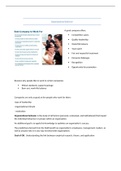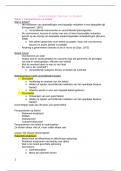Samenvatting
Samenvatting Organizational behaviour
- Instelling
- Universiteit Antwerpen (UA)
Dit document bevat een samenvatting van alle lessen die gegeven worden in het vak Organizational Behaviour door professor Declerck. Het bevat alle info van de slides aangevuld met notities genomen tijdens de lessen. (16/20)
[Meer zien]













